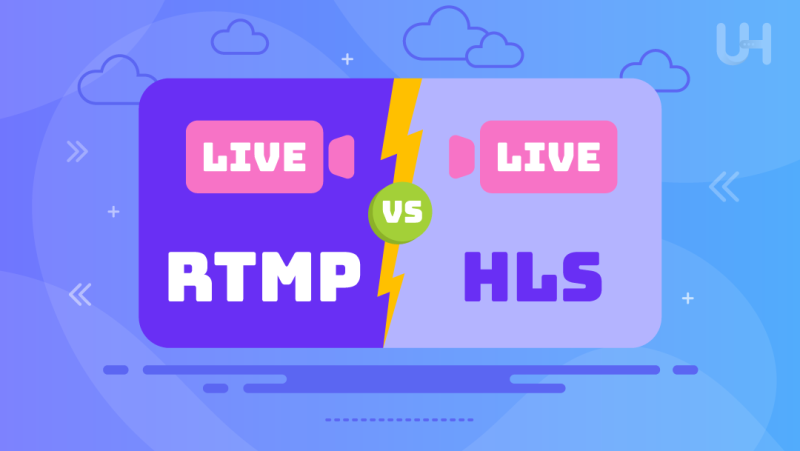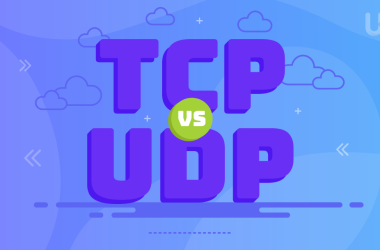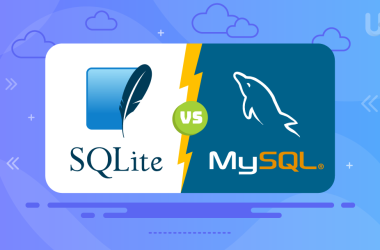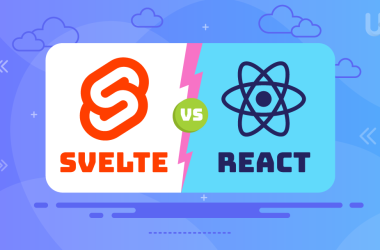When getting into video streaming, two of the most common acronyms one comes across are RTMP and HLS. Both these protocols form the backbone of live streaming, and knowing how they work is crucial for any person interested in either streaming video content or making an informed decision between RTMP vs HLS.
In this article, we provide a deep analysis of RTMP and HLS, outlining the features of each and discussing their differences to assist you in deciding which option best meets your streaming needs.
What is RTMP (Real-Time Messaging Protocol)?
RTMP, in complete form, is a Real-Time Messaging Protocol devised for streaming audio and video, including data, across the Internet. It works over TCP, guaranteeing that all data packets are delivered reliably and in order. The application of this protocol assures low-latency performance; what the viewers actually see on their screen happens almost momentarily in real life. This makes RTMP particularly valuable for live-stream events because it provides real-time interaction.
A video source is fed into an encoder, which converts the raw video signal into a compressed digital format for streaming. This stream is sent to an RTMP server, the hub for live streams, which distributes it to a CDN for global reach and to a video gateway for local access. The content delivery network minimizes latency for viewers worldwide, while the video gateway ensures local viewers can access the stream directly. The RTMP protocol efficiently facilitates the delivery of the live stream at both the CDN and the video gateway.
Advantages of RTMP
- Low Latency: One of the most notable features of RTMP (Real-Time Messaging Protocol) is its low latency. This is particularly important for live events, such as sports broadcasts or interactive webinars, where even a slight delay can impact the viewer’s experience. RTMP can deliver content with latency as low as a few seconds, making it ideal for situations where timing is critical.
- Stable Performance: RTMP is recognized for its reliability. It excels in environments with stable network conditions, ensuring consistent performance. This stability is crucial for live broadcasts, as any disruption in streaming can interrupt the entire event.
- Stream Quality: RTMP supports high-quality streaming with minimal buffering, provided that network conditions are optimal. This guarantees that viewers enjoy a smooth and uninterrupted video experience.
Limitation of RTMP
- Flash Dependency: RTMP is tied to Adobe Flash, which has been phased out from all modern web browsers and devices. Thus, RTMP sees a different level of support than it did in the past for use in modern streaming situations where Flash is not available.
- Limited Mobile Compatibility: RTMP’s dependency on Flash makes the technology less mobile-compatible since most browsers and applications have already stopped supporting It.
- Complex Configuration: Setting up RTMP is a bit more painful compared to the more recent streaming protocols. It usually involves more configuration and maintenance to keep working well.
What is HLS (HTTP Live Streaming)?
Unlike RTMP, HLS operates over standard HTTP servers, making it compatible with a wider range of devices. HLS video streams are divided into segments, which allows for higher-quality streaming and supports larger audiences, though it may increase latency. To mitigate this, content distributors often use RTMP for initial encoding and then repackage the content for HLS delivery.
A key feature of HLS is its adaptability to changing network conditions. It dynamically adjusts video quality to ensure a smooth viewing experience.
Advantages of HLS
- Broad Compatibility: HLS is widely compatible with a range of devices and platforms. It works seamlessly on desktop browsers, smartphones, tablets, and even smart IPTVs. This extensive support is primarily due to its use of standard HTTP, which is universally supported.
- Adaptive Bitrate Streaming: One of HLS’s advantages is adjusting video quality based on the viewer’s internet speed. This ability is significant. If a viewer’s connection slows down, HLS automatically switches to a lower-quality stream to prevent buffering. Conversely, if the connection improves, it can revert to a higher-quality stream. This adaptability dramatically enhances the viewer’s experience, especially in areas with inconsistent internet speeds.
- No Flash Required: Unlike RTMP, HLS does not rely on Flash technology, making it more suitable for modern web environments and mobile devices.
- HTTP-Based Streaming: HLS utilizes standard HTTP, allowing it to take advantage of existing web infrastructure such as content delivery networks (CDNs) and caching mechanisms. This capability improves streaming’s scalability and performance.
Limitation of HLS
- Higher Latency: One of the main drawbacks of HLS (HTTP Live Streaming) is its higher latency than RTMP (Real-Time Messaging Protocol). The chunking and playlist mechanism used by HLS can introduce delays in the stream. While this latency is generally acceptable for on-demand content, it can be problematic for live events that require real-time interaction.
- Complex Implementation: Implementing HLS can be more complicated than using RTMP, primarily because the video needs to be segmented into chunks and the playlist managed. This added complexity can increase the effort required for setup and maintenance.
- Increased Bandwidth Usage: The adaptive bitrate feature of HLS increases bandwidth usage. It streams and caches multiple quality levels of the video. This can be an essential consideration if unlimited bandwidth costs are a concern.
Make Your Streaming Experience Even Better!
Whether you’re just starting out in the world of streaming or want to upgrade your current setup, having dependable hosting is essential for seamless, buffer-free viewing. Check out Ultahost today and let’s take your streaming to new heights together!
Comparative Analysis: RTMP vs HLS
| Feature | RTMP (Real-Time Messaging Protocol) | HLS (HTTP Live Streaming) |
| Supported Browsers | Requires Flash plugins (deprecated) | All modern browsers |
| Device Compatibility | Primarily desktop and dedicated streaming devices | Broad, including mobile devices |
| Latency | Lower (typically milliseconds) | Higher (typically seconds) |
| Reliability | Prone to disruption on poor connections | Tolerant to network fluctuations |
| Content Distribution | Single stream requires a dedicated server | CDN-friendly, fragmented files |
| Platform Integration | Requires dedicated RTMP plugins or servers | Easy with standard HTTP libraries |
| Complexity | It can be more complex and requires specific expertise | Less complex, easier to set up and manage |
| Use Cases | Live events, sports broadcasts, interactive streaming | On-demand video, VOD, and live streams with a wider reach |
HLS vs RTMP: Adaptive Streaming
These platforms primarily provide evergreen content across a range of genres to cater to various preferences. While both HLS (HTTP Live Streaming) and RTMP (Real-Time Messaging Protocol) support adaptive streaming, HLS is particularly effective in this regard. It readily adjusts to fluctuations in bandwidth and device capabilities. Although RTMP also offers adaptive streaming, it is mainly recognized for delivering low-latency streams, making it more suitable for real-time and interactive applications rather than for enhancing video quality.
Latency Comparision Between RTMP vs HLS
RTMP is preferred mainly because of its very low latency, which is required in applications where instant interaction is needed, such as online gaming and live events. Even a little delay in such cases can result in a horrible user experience. Hence, RTMP is the best option for smooth and responsive content delivery.
On the other hand, HLS introduces a lot of latency, which can range from some seconds to over a minute. This latency may affect the efficiency of real-time applications, making HLS less suitable for real-time interaction scenarios. Thus, HLS is very good to go either for pre-recorded content or streams that are non-interactive; it could be more efficient where immediacy is required.
RTMP vs HLS: Compatibility Analysis
HTTP Live Streaming (HLS) exhibits a high level of compatibility with a diverse array of devices and platforms, including iOS, Android, web browsers, and smart televisions. This widespread compatibility renders HLS an effective option for reaching a broader audience.
On the other hand, while different streaming systems and media players support RTMP, their relationship with Adobe Flash has caused complications for compatibility on more current devices and in contemporary browsers.
Security Overview
When comparing RTMP vs HLS, it is evident that HLS offers enhanced security features. One of the key advantages of HLS is its support for digital rights management (DRM), which allows for data encryption and is essential for safeguarding copyrighted content. In contrast, RTMP does not include built-in security measures, often requiring additional solutions to ensure secure streaming. This lack of inherent data security and data privacy can make RTMP more susceptible to unauthorized access and content piracy.
Server Requirements

With the need to handle several small video chunks and adaptive streaming, HLS often necessitates more powerful servers and bandwidth. Consider using a Well-Managed Dedicated Server. This can increase infrastructure expenses, making it suited for larger, well-resourced content providers. RTMP is more efficient regarding server requirements, making it a more cost-effective solution for streaming applications with fewer resources or lower budgets.
Use Case of RTMP and HLS
HLS is ideal for on-demand video streaming and reaching a large audience across several devices and platforms. Video-on-demand services, live events with less stringent latency requirements, and content distribution to iOS and Android smartphones are all standard applications. RTMP, with social network hosting, is ideal for real-time applications that require low latency, such as live sports broadcasts, online gaming, and interactive content. It is suitable for time-sensitive, immersive experiences requiring immediate engagement and minimal delay.
HLS vs RTMP: Which is Better for you?
Choosing between HLS (HTTP Live Streaming) and RTMP (Real-Time Messaging Protocol) depends on your streaming needs. Here’s a more precise breakdown of the decision-making process based on key factors:
Content-Type
HLS excels in adaptive streaming for on-demand video content, providing a smooth viewing experience across various devices and network conditions. In contrast, RTMP is best suited for real-time content, such as live sports and gaming, where minimal latency is required.
Target Audience and Device Preferences
HLS is compatible with a wide range of devices, including iOS, Android, and web browsers, making it suitable for a diverse audience. However, if your audience needs immediate interaction, particularly gamers or sports fans, RTMP offers a more responsive experience.
Desired Latency Levels
HLS generally introduces some delay, making it less ideal for real-time scenarios. For situations where low latency is critical, RTMP is the preferred protocol, providing near-instantaneous interactions.
Content Delivery Network (CDN) Compatibility
HLS is well-supported by various CDNs, ensuring efficient content delivery. On the other hand, RTMP may require specific CDNs that support the protocol, which could limit your options.
Conclusion
The choice between RTMP and HLS depends on your streaming objectives. If you seek real-time interaction, RTMP is the best option. In contrast, HLS excels in delivering on-demand content and offers greater accessibility. Using these protocols in combination with reliable hosting solutions will guarantee a smooth streaming experience.
Enhance your video hosting website performance with VDS Hosting plans from UltaHost. It’s the ideal choice for businesses embracing virtual hosting solutions, perfect for reliable, high-speed operations. Experience flexibility and power tailored to your unique needs. Explore UltaHost today!
FAQ
What is the primary difference between RTMP and HLS?
RTMP offers low latency, making it ideal for live interactions, while HLS focuses on compatibility and scalability, making it better for VoD.
Can RTMP and HLS be used together?
Yes, RTMP is often used for ingesting live streams, which are then transcoded to HLS for broader delivery.
Which protocol is better for mobile streaming?
HLS is better for mobile devices due to its compatibility with most modern browsers and operating systems.
Does RTMP support adaptive bitrate streaming?
RTMP has basic support, but HLS provides superior adaptive bitrate streaming capabilities.
What hosting solutions work best for streaming?
VPS for Streaming Hosting and VDS Hosting are excellent choices for streaming due to their scalability and reliability.
Is HLS suitable for live streaming?
While HLS is mainly used for VoD, advancements like Low Latency HLS make it viable for live streaming with reduced delays.
Why is RTMP still used despite HLS’s popularity?
RTMP remains a favorite for live content ingestion due to its low latency and real-time capabilities.












